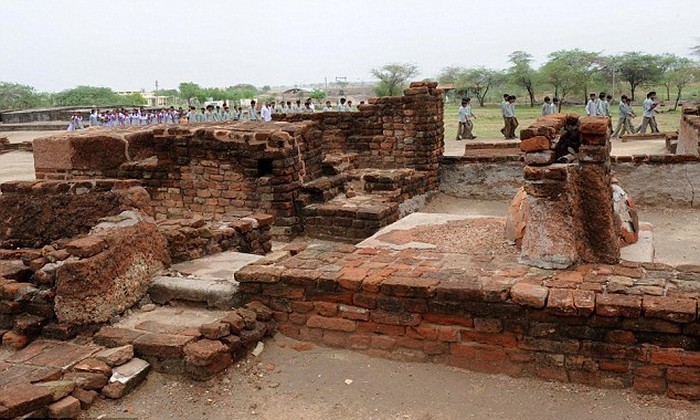The Harappan Dravidian civilization was the oldest on Earth.

Egypt and Mesopotamia are considered by many to be the most ancient civilizations on Earth. But thanks to the study of archaeological artifacts, it was now possible to confirm that the Indian (Harappa) civilization was in fact formed around the 8th millennium BC. , that is, two and a half millennia earlier than previously thought.
Thus, the Harappan civilization in its development ahead of Egypt and Mesopotamia. Cities with advanced complex infrastructure were built there (the first public toilets in the world and a city sewage system appeared here) and magnificent works of art were created. New archaeological finds also point to the reasons why the thriving Dravidian civilization ceased to exist.
A group of researchers from the Archaeological Survey of India (ASI), the Institute of Archeology, the Deccan College Pune and the Indian Institute of Technology in Kharagpur conducted a radiocarbon analysis of ceramics and animal bones in different archaeological layers of the Birran site in northern India. Analysis has shown that this settlement can be considered the oldest in the Indian subcontinent.
')

In the study of artifacts, scientists also used the method of optically stimulated luminescent dating (OSL-dating) to determine the point in time when the mineral was last exposed to light. With its help, archaeologists have tried to determine the presence of sharp climatic changes during the heyday of the Harappan civilization.

The heyday of the Harappan civilization fell on 2600-1900 BC. Together with Ancient Egypt and Mesopotamia, it is considered one of the three early civilizations of the Ancient World and the largest in area among them. The borders of the empire stretched from the Arabian Sea to the Ganges, in the territories of modern India, Pakistan and Afghanistan. At its peak, civilization numbered about 5 million inhabitants, representing approximately 10% of the world's population. Among the unique heritage of the Harappan civilization are the first toilets on earth, elaborate stone scales, necklaces of drilled through precious stones and exquisitely carved stone seals. These artifacts also contain inscriptions in unusual and complex writing, which researchers have not yet deciphered.
Fragments of ceramics and metal products found in the vicinity of Birran testify to the high level of craftsmanship of artisans and metallurgists who already knew how to work with copper, bronze, lead and tin, burn pots and control the flow and discharge of water.

Diagram of the residential quarters of Birrana (A) and approximate dating of various cultural layers (B)
In Birran, the houses of ordinary citizens received water from shallow wells, and the sewage went down to the street. The richer houses had separate bathrooms and a second floor.
It used to be thought that the drought and drying up of the Indus River caused the decline of the Harappan civilization. There were other theories. For example, the invasion of the Aryans, the ancestors of the current Iranians and Indians.
Scientists believe that climate change only indirectly influenced the decline of the Harappo Empire. People continued to farm even after drought, but switched from wheat and barley to drought-resistant crops such as millet and rice. However, due to lower yields of these crops, large areas had to be sown and the process of deurbanization began.
The decline of the Indus civilization falls on the XVIII-XVII centuries BC. At this time, the bulk of the Dravidian population moves to the south-east of Indostan and loses its former level of development.

Anthropologically, the Dravids are very different from the rest of the Indian population. In the photo: South Indian actress Anushka Shetty, by origin Tulu, a descendant of the Dravidians
The scientific work of Indian scientists published in the journal Scientific Reports (doi: 10.1038 / srep26555).
Source: https://habr.com/ru/post/372333/
All Articles